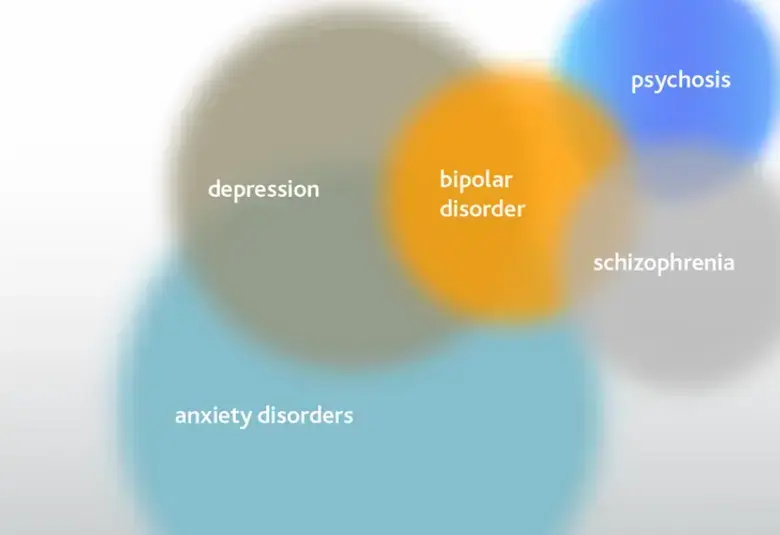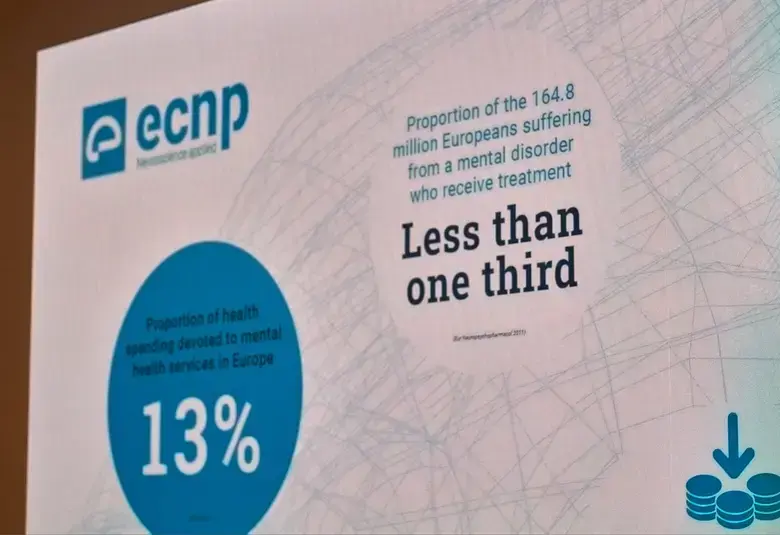There are major differences in individuals’ motivated behaviour and stress coping responses. Genetic factors and exposure to early life stress are important components. More recently, it is recognised that trait anxiety is a key moderator of this variation1, and a vulnerability factor for psychopathology such as depression1. In this ECNP2021 plenary lecture, Carmen Sandi (Brain Mind Institute, Lausanne, Switzerland) presented work from her group regarding the mechanisms involved and implications for developing effective treatments.
What is motivation?
Motivation facilitates overcoming the cost of an effortful action to achieve a desired outcome. This outcome may be an extrinsic or intrinsic reward, or avoidance of adverse stimuli or punishment. Multiple components are involved including incentive value, effort and endurance/fatigue.
Motivational deficits are prevalent in several psychiatric disorders including depression
The brain’s motivational hub involves the nucleus accumbens (NAc) and ventral striatum2. These circuits are also involved in anxiety. Motivational deficits are prevalent in several psychiatric disorders, including depression, expressing as anhedonia, increased fatigue, anergia and slowed movements/speech.
Impact of trait anxiety
All individuals fall within the continuum of trait anxiety. Those with low anxiety are emotionally stable, whereas those with high anxiety have a negative affect, even to minor stressors. High trait anxiety is a vulnerability factor to develop stress-induced depression1.
High trait anxiety is a vulnerability factor to develop stress-induced depression
Behavioural phenotyping is used to learn about anxiety and stress response. With rodents, locomotor responses in mildly arousing exploration tasks can predict their future vulnerability to stress response3. These tasks have been adapted for use with humans, including immersive virtual reality environments3.
High trait anxiety and motivational behaviour
Effort-based incentivized behaviour is reduced by stress in high anxiety, shown by unpublished data from the progressive ratio task in rodents. In humans, participants offered different inventive levels exert handgrip responses to earn monetary rewards4. The high-anxiety group displayed differences in effort allocation across different incentives, with reduced effort for lower incentives. In contrast, low-anxiety individuals showed similar levels of energy across incentive levels. The ‘limited resources’ principle suggests this may be due to the increased allocation of neural activity required for such tasks in high-anxious people4.
Effort-based incentivized behaviour is reduced by stress in high anxiety
High-anxious people also show higher mental and physical fatigue4, which typically deters performance by affecting processes of cost-benefit analysis of effort exertion. In the social dominance test, rats with high-anxiety demonstrate passive coping stress responses5. Similarly, in humans under stress, high-anxious individuals show reduced competitive self-confidence, whereas low-anxious show increased self-confidence6.
Brain energy metabolism and social behaviour
Mitochondrial function in the NAc is critically involved in low social competitiveness associated with high-anxiety in the rodent model5. Dr Sandi presented unpublished work, in humans, showing high anxiety and chronic stress lead to lower taurine levels in the NAc. Taurine has important antioxidant activity, and taurine depletion enhances oxidative stress in the mitochondria7. This highlights a key role for brain energy metabolism in social behaviour5.
Brain energy metabolism has a key role in social behaviour
Effect of peripubertal stress
Dr Sandi discussed unpublished work looking at peripubertal stress in mice, resulting in increased anxiety, reduced sociability and increased adiposity in adulthood. In the NAc there is decreased mitochondrial and neuronal function and decreased levels of the adipokine eNampt and coenzyme NAD+. Adipose overexpression of eNampt restored NAc NAD+ levels and rescued sociability deficits, suggesting eNampt modulates a fat-to-brain pathway of communication. In the context of depression, this could provide a mechanistic association between increased fat deposition and decreased sociability, both triggered by early life stress.
Future treatments
Brain mitochondrial function provides a target for treatment of anxiety-related disorders
Dr Sandi proposed that NAc mitochondrial function is a potential marker for anxiety-related social disorders. This provides an avenue for future treatments8, including preventing long-term consequences of early life stress. Novel therapies being explored include nicotinamide5, taurine (unpublished work) and medium chain triglycerides9. In the mouse, systemic treatment with nicotinamide restored sociability deficits and NAc NAD+ levels5.
Our correspondent’s highlights from the symposium are meant as a fair representation of the scientific content presented. The views and opinions expressed on this page do not necessarily reflect those of Lundbeck.




